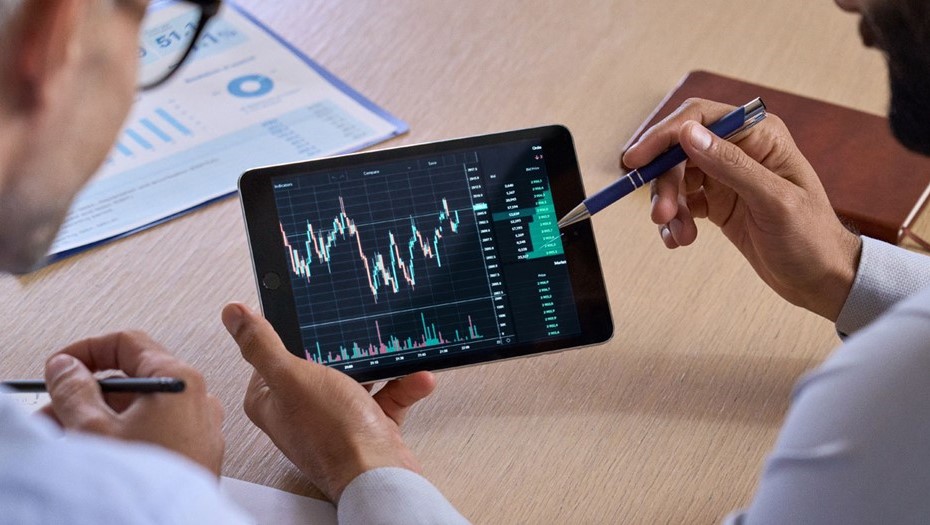Top 10 Russian Companies by Revenue in 2025: A Comprehensive Review and Comparative Analysis
Introduction
The Russian economy is undergoing a period of significant transformation, driven by global trends, state-sponsored digital transformation programmes, and adjustments to new geopolitical realities. The country's largest corporations, leaders in their respective industries, are demonstrating the ability to generate record revenues, relying on domestic demand and the development of export markets. This article is intended for an international audience of investors, analysts, and financial professionals, revealing the top 10 companies in Russia by revenue in 2025. We will discuss the methodology used in compiling the rankings, key performance indicators, compare industry leaders, and assess the trends and external factors impacting their results.
Methodology and Data Sources
Rating Sources
For an objective analysis, three main sources were used:
- RBK500 — An annual ranking of the largest companies by revenue, providing comprehensive consolidated reports.
- Interfax (SPARK) — A financial reporting database under RAS and IFRS, ensuring verification of primary data.
- Annual Reports of Companies — Official documents for the year 2024 published on the issuers' websites.
Key Principles
To ensure comparability in the rankings, the following rules have been applied:
- Revenue is considered in consolidated terms, including all subsidiaries and joint ventures.
- Non-recurring income from asset revaluation and government subsidies are excluded to avoid distorting operational results.
- Conversion to US dollars is carried out at the average annual exchange rate of the Central Bank of the Russian Federation (approximately 80 ₽/USD) for uniformity of reports.
- Data is validated for consistency across RBK500, SPARK-Interfax, and the companies’ official reports.
This methodology enables comparisons not only among Russian corporations but also with their international counterparts.
Top 10 Companies by Revenue
| No | Company | Industry | Revenue (₽ trillion) | Revenue (USD billion) | Net Profit (USD billion) | EBITDA Margin (%) |
|---|---|---|---|---|---|---|
| 1 | Gazprom | Oil & Gas | 13.8 | 172.5 | 24.3 | 32 |
| 2 | Rosneft | Oil & Gas | 11.2 | 140.0 | 18.7 | 28 |
| 3 | Lukoil | Oil & Gas | 8.4 | 105.0 | 12.1 | 30 |
| 4 | Sberbank | Finance | 7.6 | 95.0 | 20.5 | 45 |
| 5 | Surgutneftegaz | Oil & Gas | 7.1 | 88.8 | 9.2 | 35 |
| 6 | Novatek | Oil & Gas | 6.9 | 86.3 | 11.0 | 33 |
| 7 | Norilsk Nickel | Metallurgy | 6.3 | 78.8 | 14.2 | 40 |
| 8 | X5 Retail Group | Retail | 6.0 | 75.0 | 3.1 | 7 |
| 9 | Magnit | Retail | 5.4 | 67.5 | 2.8 | 6 |
| 10 | Russian Railways (RZD) | Transportation | 5.2 | 65.0 | 4.5 | 12 |
The table presents key financial indicators for the top 10 companies in Russia by revenue in 2025. The high revenues showcase the dominance of the resource sector, while substantial figures in finance and retail indicate the diversification of the Russian economy.
Sector Analysis and Market Leaders
Oil & Gas Sector
Oil and gas giants continue to dominate the ranking due to a historically established infrastructure, extensive export contracts, and high energy prices. Gazprom retains the top position with revenue of USD 172.5 billion, actively developing LNG and green hydrogen projects. Rosneft strengthens its position through asset diversification in the Arctic shelf, while Lukoil expands its footprint abroad, including in Iraq and Kazakhstan. Surgutneftegaz and Novatek showcase high margins due to cost optimisation and a focus on LNG projects.
Export routes through "Siberia-Asia" and "Nord Stream" enable increased gas deliveries to new markets, compensating for Western sanctions. Corporate strategies focus on reducing carbon footprints and investing in CO₂ capture technologies, enhancing the investment ratings of these companies.
Financial Sector
Sberbank occupies the fourth position with revenue of USD 95 billion and a net profit of USD 20.5 billion. The high EBITDA margin of 45% can be attributed to the growth of commission income, effective cost management, and scaling of digital platforms. Key development areas include cloud services, artificial intelligence-based solutions, and expanding the ecosystem for retail and corporate clients. Sberbank actively invests in fintech startups and cybersecurity projects, reinforcing its leadership in the domestic market.
In 2025, the bank launched several initiatives for implementing blockchain technologies for international transfers, allowing for reduced costs and quicker transactions between corporate clients.
Metallurgy and Mining
Norilsk Nickel (USD 78.8 billion) — the world leader in nickel and palladium production — demonstrates a margin of 40% due to the integration of mining and processing. The company invests significantly in environmental projects: modernisation of treatment facilities, transitioning to renewable energy, and reducing sulfur emissions. This approach enhances ESG indicators and strengthens its positions in Western and Asian markets.
In 2025, Nornickel expanded battery nickel production, which is in high demand in the electric vehicle industry, ensuring additional revenue growth and diversification of its client base.
Retail
X5 Retail Group (USD 75 billion) and Magnit (USD 67.5 billion) occupy the eighth and ninth positions, reflecting the importance of retail in the Russian economy. X5 maintains its leading position in the "nearby" and "hypermarket" formats, actively developing online delivery through its own service "Pyaterochka at Home." Magnit strengthens its presence in regions, develops "Magnit Cosmetic" stores and pharmacy chains, which boosts revenue and diversifies its business model.
Both companies are implementing digital solutions for supply chain management, which reduces storage costs and shortens delivery times to end consumers.
Transportation
Russian Railways (RZD) finishes the top ten with revenue of USD 65 billion. A substantial portion of income stems from the transportation of petroleum products, coal, and container cargo. Investments in high-speed highways and the digitisation of logistics processes enhance capacity and reduce delivery times. A significant project is the integration with seaports involving smart container terminals, fostering the growth of multimodal transport.
In 2025, RZD launched a pilot project for autonomous locomotives on key freight routes, demonstrating a commitment to innovation and efficiency improvement.
Comparative Analysis
Revenue Growth Dynamics
The oil and gas sector exhibited an average annual revenue growth of 8–10% due to the expansion of LNG exports and increased domestic gas tariffs. The financial sector (Sberbank) showcased a 12% growth driven by digital products and an increase in fees. Retail operators noted a moderate recovery in consumer demand with a growth of 5–6% post-pandemic, supported by state measures to stimulate spending.
Profitability and Margins
| Company | EBITDA Margin (%) | ROS (%) |
|---|---|---|
| Sberbank | 45 | 22 |
| Norilsk Nickel | 40 | 18 |
| Gazprom | 32 | 14 |
| Rosneft | 28 | 13 |
| Lukoil | 30 | 12 |
| Russian Railways | 12 | 7 |
| X5 Retail | 7 | 4 |
| Magnit | 6 | 4 |
The high margin metrics of Sberbank and Norilsk Nickel are attributed to efficient cost management and high added value of services and products. Retail remains the lowest-margin sector due to intense competition and price sensitivity among consumers.
Trends and External Growth Factors
Impact of Sanctions and Exports
Western sanctions have prompted oil and gas companies to redirect their major export volumes to Asia and BRICS countries. New pipeline corridors and LNG terminals on Russia's northern coast provide access to the Chinese, Indian, and South Korean markets. As a result, revenue and profits remain high despite restrictions on Western markets.
Digitisation and ESG
Sberbank invests over USD 1 billion annually in the development of cloud and AI platforms, expanding its digital service offering. Norilsk Nickel implements programmes to reduce SO₂ emissions and adopt renewable energy, improving sustainable development metrics. Retail operators are introducing "green" logistics solutions: electric vehicles for deliveries, packaging optimisation, and reducing the carbon footprint of their operations.
CAPEX and Long-Term Planning
Oil and gas companies allocate up to 10% of their revenue to capital expenditures (CAPEX) for exploration, drilling, and the construction of LNG plants. Sberbank and retailers focus on process automation and the implementation of IoT devices for supply chain monitoring and analytical platforms, which accelerate decision-making and reduce operational costs.
Conclusion
The overview of the top 10 Russian companies by revenue in 2025 demonstrates the sustained dominance of the resource sector, the high potential of financial and metallurgical leaders, and the significance of retail and transportation to the economy. Companies are adapting to external challenges, investing in digitisation and ESG projects, and diversifying export routes. For global investors, key metrics remain not only revenue volumes but also profitability, growth rates, and the companies' ability to innovate. This analysis will assist in forming well-founded investment decisions and identifying promising avenues for expanding presence in the Russian market.




